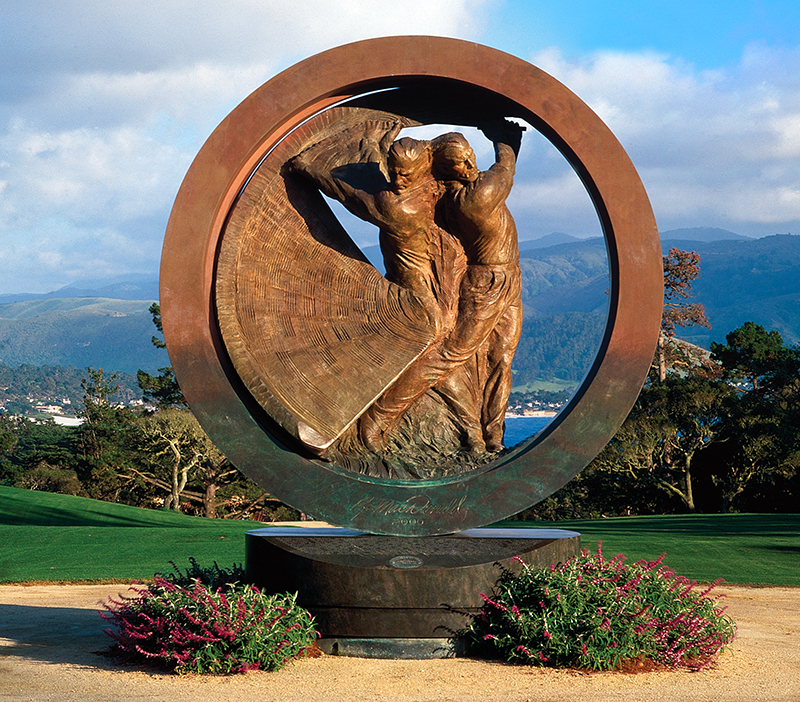When your $118 million home has sweeping views of the Hudson River in New York City, and Ryan Serhant of “Million Dollar Listing New York” is your broker, which artist’s work appears in your living room?
When your legendary golf course in Pebble Beach is host to the 100th US Open Golf Tournament, and history-making golf pros will be present to celebrate, which artist can anchor the importance of the occasion for generations to come?
When the International Olympics Committee selects an American city for its Summer Games, which artist can create a landmark for this definitive moment in American athletic achievement?
The answer to all these questions is Richard MacDonald, the internationally acclaimed artist who leads American figurative sculpture from his West Coast studio.
When you first meet MacDonald, he looks like the epitome of a California boy, his lean and tanned frame suggesting a man committed to excellence in everything he does.
“I believe that beauty connects people and lifts their spirits to a higher level. I’ve dedicated my career to making a difference,” MacDonald says.
He smiles as he offers a tour of his 30,000 square foot studio, located in the hills of Monterey, Calif., overlooking the Pacific Ocean and Monterey Bay.
This Monterey studio is home base for the globally collected artist, who also has studios in Las Vegas and London, England.As MacDonald guides me from room to room, he points out different steps in the process of making a bronze sculpture. Everywhere I look, the interior is spotless and brightly lit.
MacDonald opens the doors to his personal studio, where several sculptures in various stages of completion are scattered about the airy and spacious room. Music fills the air and a model waits patiently to begin the day’s work.
This American artist has been rewriting the conventions of classical figurative sculpture for the past 25 years. MacDonald’s monuments for the Summer Olympic Games in Atlanta in 1996, and the 100th US Open Golf Tournament in Pebble Beach in 2000, point to a much larger career in bronze with a portfolio of over 400 limited edition works.
MacDonald is known for movement, anatomy, and the patinas of his works. And he consistently pushes the envelope of what is possible in bronze.
In the past when foundries told him it couldn’t be done, he’d invent ways to get it done. Then last year he did what every sculptor dreams of doing – he completed his own state-of-the-art-foundry.
Today MacDonald is working on several monumental pieces. These dancers and mimes are larger than life, and will stand over 17 feet tall when completed.
His current project will be installed at historic White Lodge in London’s beautiful Richmond Park. I ask him if that will be his final work. “After 25 years,” he says, “I’m just getting started.”
.jpg) .jpg) |
THREE WAYS TO DESIGN WITH SCULPTURE
1: Group small sculptures together on a table or shelf. Use bases and pedestals and vary heights to bring added interest to the vignette.
2: Visualize your own personal story through your collection, choosing works that bring you pleasure and narrate your own life.
3: Elevate your landscape with a life-size or heroic-size sculpture. Consider placement at the center of a garden room, where two paths cross, or as a water feature.
Mel Ahlborn represents Richard MacDonald at Dawson Cole Fine Art in Carmel, Calif.


